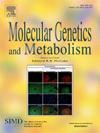先天性糖基化失调的发生率和患病率:过去,现在和未来
IF 3.5
2区 生物学
Q2 ENDOCRINOLOGY & METABOLISM
引用次数: 0
摘要
先天性糖基化失调(PMM2- cdg)约占所有cdg的60%,是由编码PMM2基因的致病性变异引起的,PMM2可催化n -连锁糖基化的重要早期步骤。这种常常危及生命的疾病目前尚无批准的治疗方法,但由于临床表现广泛、疾病罕见以及缺乏中央的全球患者登记,对这种疾病进行准确患病率估计的努力受到阻碍。在这里,我们基于致病等位基因的频率,使用Hardy-Weinberg方程计算了北美和欧洲PMM2-CDG发病率和患病率的新估计。从基因组聚集数据库(gnomAD v4.0)中获得等位基因频率,并根据患者数据集中基因型的发生和对蛋白质功能的预期后果调整导致活产的特定等位基因组合的可能性。然后根据国家统计数据库的历史种族和出生数据,结合估计的患者死亡率,计算新的发病率和流行率估计数。计算出的新发病率估计值在北美和欧洲合计为33,576分之一(分别为40,375分之一和29,043分之一),这意味着自1980年以来这两个区域合计每年平均有303例活产。新的患病率估计为63,694 / 1(北美和欧洲分别为76,183 / 1和57,022 / 1),这意味着北美和欧洲共有14,154例PMM2-CDG患者。值得注意的是,这一患病率比目前估计的2447例确诊病例总和高出5倍以上,比文献中最常引用的全球患病率高出10倍。这些显著的差异突出了该病的诊断不足以及改进PMM2-CDG诊断和治疗策略的迫切需要。本文章由计算机程序翻译,如有差异,请以英文原文为准。
Incidence and prevalence of phosphomannomutase 2-congenital disorder of glycosylation: Past, present, and future
Phosphomannomutase 2-congenital disorder of glycosylation (PMM2-CDG) accounts for about 60 % of all CDGs and is caused by pathogenic variants of the gene encoding PMM2, which catalyzes an essential early step in N-linked glycosylation. Efforts to derive an accurate prevalence estimate for this often life-threatening disorder, for which there are currently no approved therapies, are hampered by the wide spectrum of clinical manifestations, the rarity of the disease, and the lack of a central global patient registry. Here, we calculated new estimates of PMM2-CDG incidence and prevalence in North America and Europe based on the frequency of disease-causing alleles using the Hardy–Weinberg equation. Allele frequencies were obtained from the Genome Aggregation Database (gnomAD v4.0) and the likelihood of specific allele combinations resulting in a live birth was adjusted based on the occurrence of genotypes in patient datasets and the expected consequences for protein function. New incidence and prevalence estimates were then calculated in the context of historical ethnicity and birth data from national statistical databases, combined with estimated patient mortality rates. The calculated new incidence estimate was 1 in 33,576 for North America and Europe combined (1 in 40,375 and 29,043, respectively), which predicts an average of 303 live births per year for both regions combined since 1980. The new prevalence estimate was 1 in 63,694 (1 in 76,183 and 57,022 in North America and Europe, respectively), which translates to a total of 14,154 patients living with PMM2-CDG in North America and Europe. Notably, this prevalence is more than 5-fold higher than the current estimate of 2447 diagnosed cases combined, and 10-fold higher than the worldwide prevalence most frequently quoted in the literature. These striking differences highlight the underdiagnosis of the disease and the critical need for improved diagnostic and therapeutic strategies for PMM2-CDG.
求助全文
通过发布文献求助,成功后即可免费获取论文全文。
去求助
来源期刊

Molecular genetics and metabolism
生物-生化与分子生物学
CiteScore
5.90
自引率
7.90%
发文量
621
审稿时长
34 days
期刊介绍:
Molecular Genetics and Metabolism contributes to the understanding of the metabolic and molecular basis of disease. This peer reviewed journal publishes articles describing investigations that use the tools of biochemical genetics and molecular genetics for studies of normal and disease states in humans and animal models.
 求助内容:
求助内容: 应助结果提醒方式:
应助结果提醒方式:


